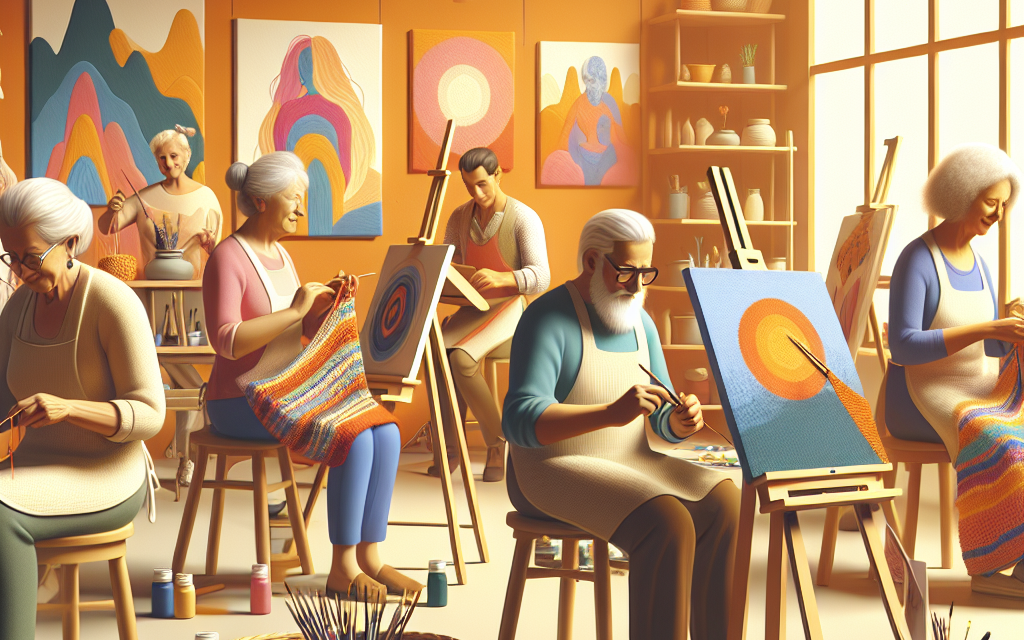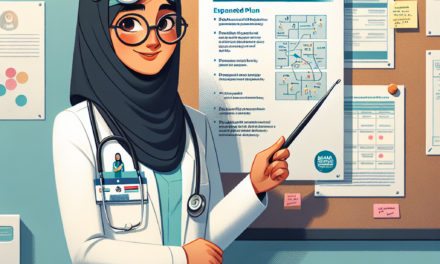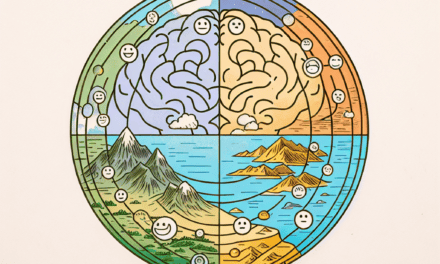The Impact of Art on Mental Well-Being in Older Adults
As the global population ages, understanding the factors that contribute to mental well-being in older adults becomes increasingly important. One such factor is the role of art, which encompasses a wide range of creative expressions, including visual arts, music, dance, and literature. This article explores the profound impact of art on the mental well-being of older adults, examining its therapeutic benefits, social implications, and the ways in which it fosters a sense of purpose and identity.
1. The Therapeutic Benefits of Art for Older Adults
Art therapy has emerged as a powerful tool in promoting mental health among older adults. This therapeutic approach utilizes creative expression to help individuals process emotions, cope with stress, and improve overall psychological well-being. Research has shown that engaging in artistic activities can lead to significant improvements in mental health outcomes.
One of the primary therapeutic benefits of art is its ability to reduce symptoms of anxiety and depression. A study published in the journal *Art Therapy* found that older adults who participated in art therapy sessions reported lower levels of anxiety and depression compared to those who did not engage in such activities. The act of creating art allows individuals to express feelings that may be difficult to articulate verbally, providing a safe outlet for emotions.
Moreover, art can serve as a form of mindfulness practice. Engaging in creative activities requires focus and presence, which can help older adults shift their attention away from negative thoughts and worries. This mindfulness aspect of art can lead to improved emotional regulation and a greater sense of calm.
- Case Study: The Healing Power of Art Therapy – A notable case study involved a group of seniors in a community center who participated in weekly art therapy sessions. Over six months, participants reported a 40% decrease in depressive symptoms, highlighting the effectiveness of art as a therapeutic intervention.
- Statistical Evidence – According to a survey conducted by the National Endowment for the Arts, 60% of older adults who engaged in artistic activities reported feeling happier and more fulfilled.
Additionally, art therapy can help older adults cope with the challenges of aging, such as loss, grief, and chronic illness. By providing a means of expression, art allows individuals to confront and process their experiences, leading to greater emotional resilience. For instance, a study published in the *Journal of Aging Studies* found that older adults who engaged in creative activities reported feeling more empowered and in control of their lives.
2. Social Connections Through Art
Art not only benefits individuals on a personal level but also fosters social connections among older adults. Social isolation is a significant concern for many seniors, often leading to feelings of loneliness and depression. Engaging in artistic activities can create opportunities for social interaction and community building.
Group art classes, workshops, and exhibitions provide platforms for older adults to connect with peers who share similar interests. These social interactions can combat feelings of isolation and promote a sense of belonging. A study published in the *Journal of Applied Gerontology* found that older adults who participated in group art activities reported higher levels of social engagement and satisfaction with their social lives.
- Community Art Projects – Many communities have initiated art projects specifically designed for older adults, such as mural painting or collaborative sculptures. These projects not only beautify public spaces but also encourage teamwork and camaraderie among participants.
- Art Exhibitions – Local galleries often host exhibitions featuring the work of older artists, providing them with a platform to showcase their creativity and connect with the community.
Furthermore, art can serve as a bridge between generations. Intergenerational art programs, where older adults collaborate with younger individuals, can foster mutual understanding and respect. These programs not only benefit older adults by reducing feelings of isolation but also enrich the lives of younger participants by providing them with valuable insights and experiences.
3. Enhancing Cognitive Function Through Artistic Engagement
Engaging in artistic activities has been shown to enhance cognitive function in older adults. The process of creating art stimulates various cognitive processes, including problem-solving, critical thinking, and memory. This cognitive engagement is crucial for maintaining mental acuity as individuals age.
Research indicates that participation in art-related activities can lead to improved cognitive performance. A study published in the *Journal of Aging and Health* found that older adults who regularly engaged in creative activities scored higher on cognitive assessments compared to those who did not. The study suggested that the mental challenges posed by artistic endeavors may help to strengthen neural connections and promote brain health.
- Art and Memory – Activities such as painting or sculpting require individuals to recall techniques, colors, and forms, which can enhance memory function. For instance, older adults who participated in pottery classes demonstrated improved memory recall in subsequent assessments.
- Problem-Solving Skills – Artistic creation often involves overcoming challenges and making decisions, which can enhance problem-solving skills. A study found that seniors who engaged in creative writing showed improved analytical thinking abilities.
Moreover, art can serve as a form of cognitive therapy for individuals experiencing cognitive decline or dementia. Art therapy programs tailored for individuals with Alzheimer’s disease have shown promising results in improving communication skills and emotional expression. Engaging in art allows these individuals to connect with their memories and emotions, providing a sense of joy and accomplishment.
4. Fostering a Sense of Purpose and Identity
As individuals age, they may grapple with questions of identity and purpose, particularly after retirement or the loss of loved ones. Engaging in artistic activities can help older adults rediscover their passions and foster a renewed sense of purpose.
Art provides a means for self-expression, allowing individuals to explore their identities and share their stories. Many older adults find fulfillment in creating art that reflects their life experiences, cultural heritage, or personal beliefs. This creative expression can lead to a greater sense of self-worth and validation.
- Personal Narratives Through Art – Many older artists use their work to tell their life stories, creating pieces that reflect their journeys. This process not only validates their experiences but also allows them to connect with others who may share similar narratives.
- Art as Legacy – For some older adults, creating art becomes a way to leave a legacy for future generations. This sense of purpose can be incredibly fulfilling, as it allows individuals to contribute to their families and communities in meaningful ways.
Additionally, participating in art can help older adults redefine their identities beyond societal stereotypes associated with aging. By engaging in creative pursuits, they challenge the notion that aging is synonymous with decline, instead embracing the idea that they can continue to grow and evolve throughout their lives.
5. The Role of Technology in Artistic Expression for Older Adults
In recent years, technology has transformed the way individuals engage with art. For older adults, technology can provide new avenues for creative expression and connection. Digital art platforms, online classes, and social media have made it easier for seniors to explore their artistic interests and share their work with a broader audience.
Online art classes have become increasingly popular, allowing older adults to learn new skills from the comfort of their homes. These classes often cater specifically to seniors, providing a supportive environment where they can explore various artistic mediums. A study conducted by the University of Southern California found that older adults who participated in online art classes reported increased feelings of creativity and self-efficacy.
- Digital Art Platforms – Many older adults are discovering the joys of digital art through user-friendly applications and software. These platforms allow for experimentation without the need for traditional materials, making art more accessible.
- Social Media and Community Building – Social media platforms provide older artists with opportunities to showcase their work, connect with other artists, and receive feedback. This sense of community can be incredibly empowering and motivating.
Moreover, technology can facilitate intergenerational connections through art. Online platforms enable older adults to collaborate with younger artists, share techniques, and learn from one another. This exchange of ideas can enrich the creative process and foster mutual respect between generations.
Conclusion
The impact of art on the mental well-being of older adults is profound and multifaceted. From therapeutic benefits that alleviate symptoms of anxiety and depression to fostering social connections and enhancing cognitive function, art plays a crucial role in promoting mental health in this demographic. Furthermore, engaging in artistic activities helps older adults rediscover their sense of purpose and identity while embracing new technologies that facilitate creative expression.
As society continues to recognize the importance of mental well-being in aging populations, integrating art into programs and services for older adults will be essential. By providing opportunities for creative engagement, we can empower seniors to lead fulfilling lives, combat isolation, and enhance their overall quality of life. The transformative power of art is not just a luxury; it is a vital component of holistic health and well-being for older adults.





